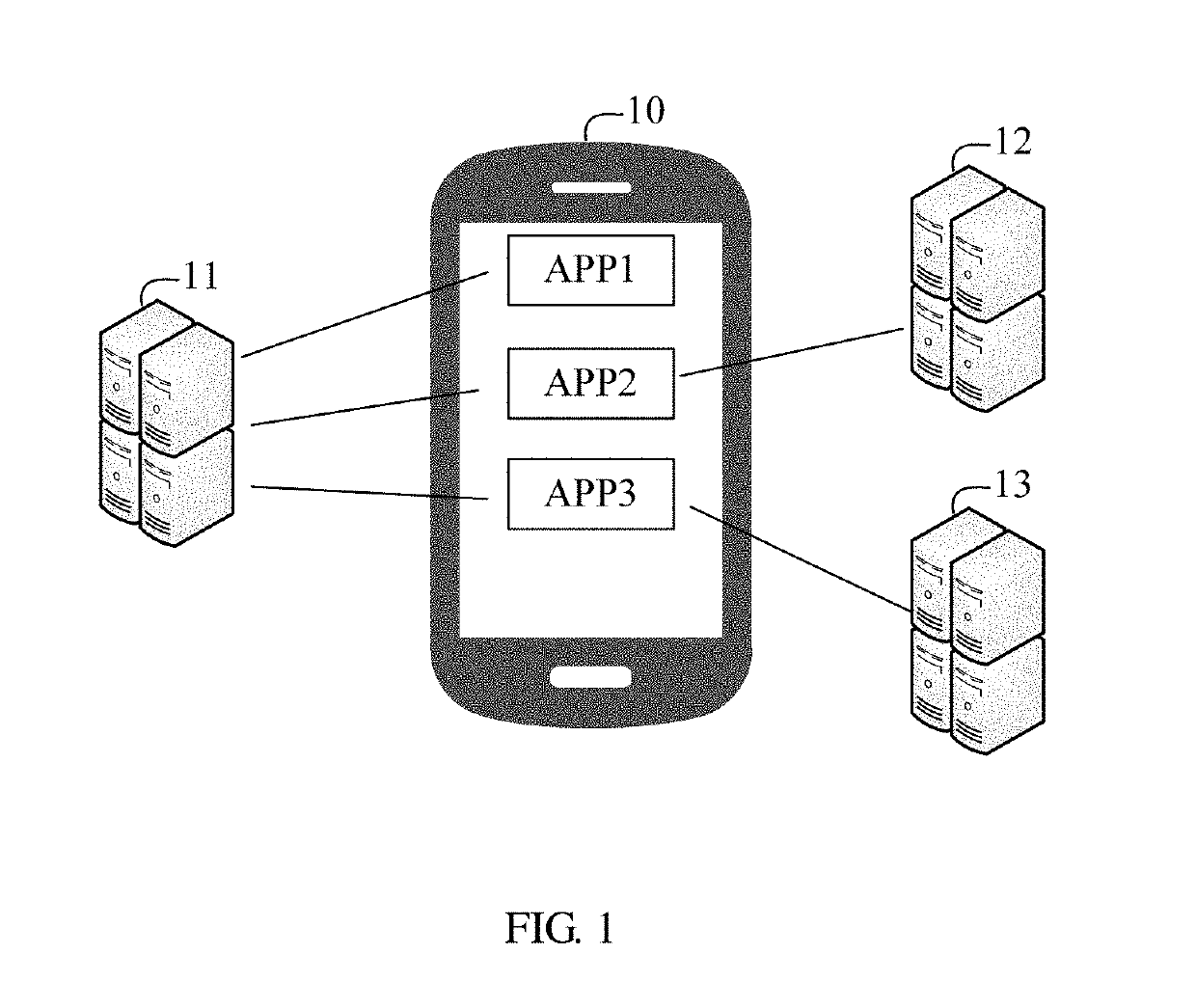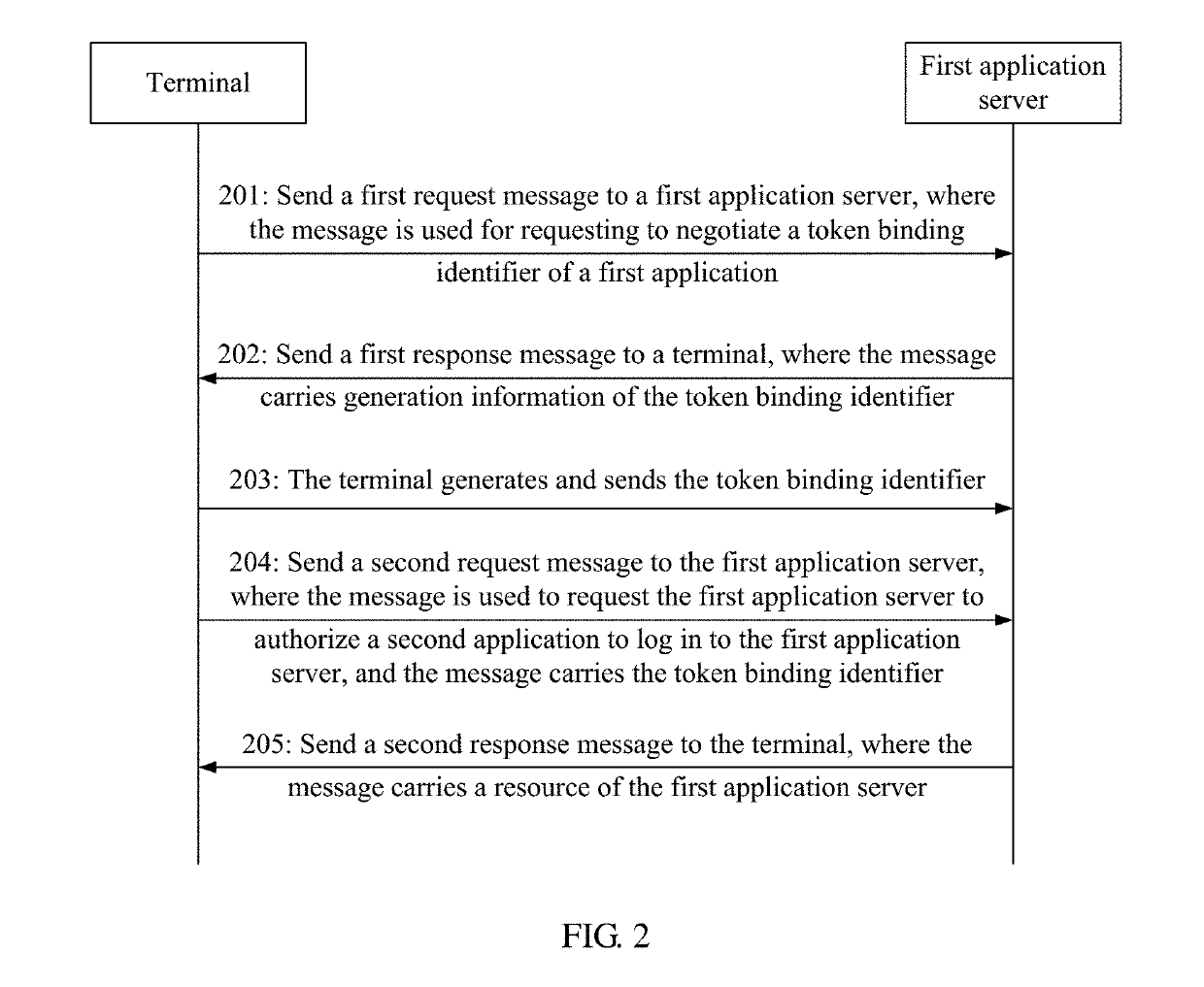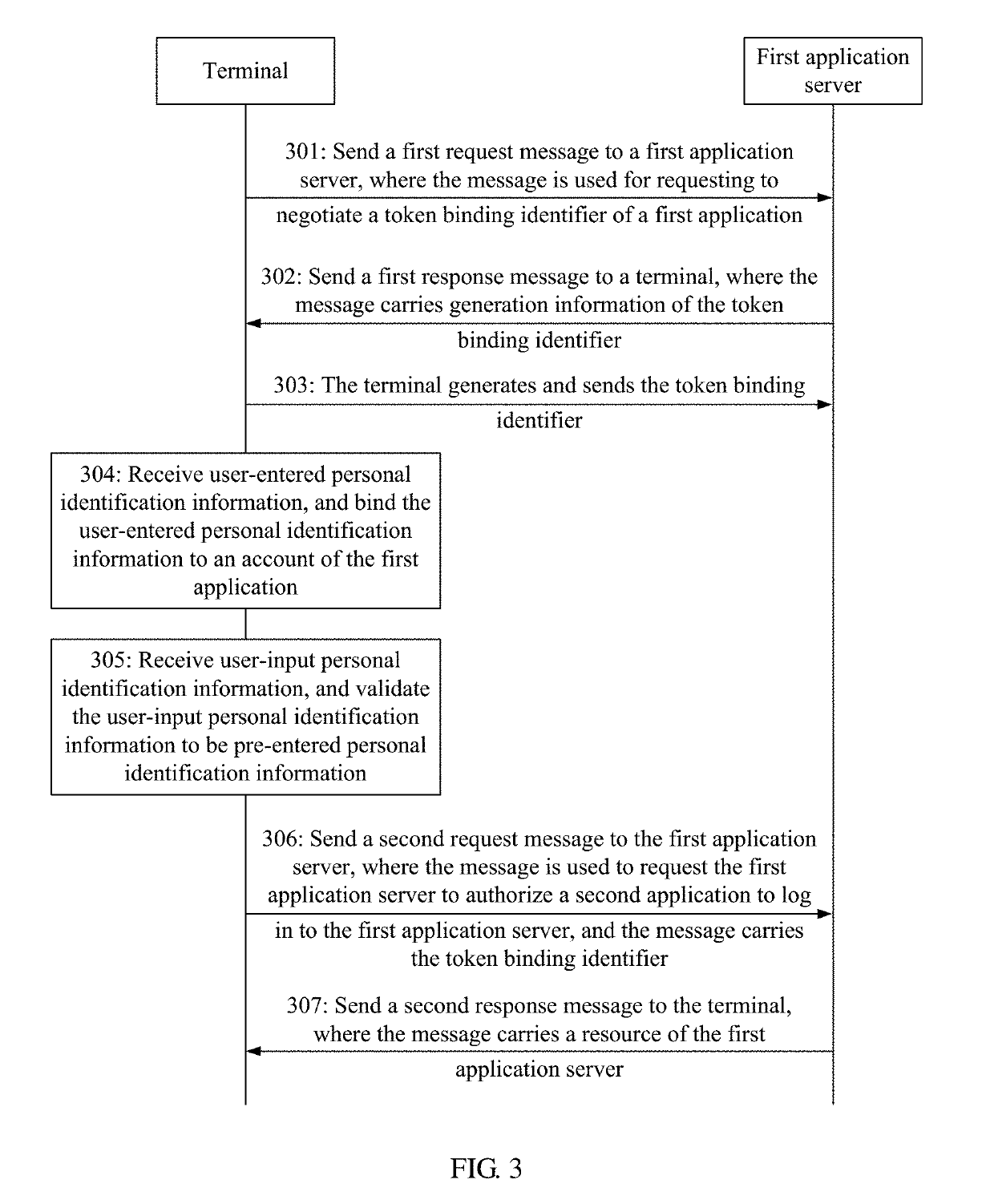Application Program Authorization Method, Terminal, and Server
a technology of application program and authorization method, applied in the field of information security technologies, can solve the problems of increasing the burden of the server, and low efficiency, and achieve the effect of reducing the burden of the first application server and simplifying the authorization procedur
- Summary
- Abstract
- Description
- Claims
- Application Information
AI Technical Summary
Benefits of technology
Problems solved by technology
Method used
Image
Examples
Embodiment Construction
[0058]The following describes the technical solutions in the embodiments of the present invention with reference to the accompanying drawings in the embodiments of the present invention.
[0059]A network architecture and a service scenario described in the embodiments of the present invention are intended to describe the technical solutions in the embodiments of the present invention more clearly, and do not constitute any limitation on the technical solutions provided in the embodiments of the present invention. A person of ordinary skill in the art may understand that with evolution of network architectures and emergence of new service scenarios, the technical solutions provided in the embodiments of the present invention are also applicable to a similar technical problem.
[0060]FIG. 1 is a diagram of an application scenario according to an embodiment of the present invention. As shown in FIG. 1, this embodiment of the present invention relates to a terminal 10, and a plurality of ap...
PUM
 Login to View More
Login to View More Abstract
Description
Claims
Application Information
 Login to View More
Login to View More - R&D
- Intellectual Property
- Life Sciences
- Materials
- Tech Scout
- Unparalleled Data Quality
- Higher Quality Content
- 60% Fewer Hallucinations
Browse by: Latest US Patents, China's latest patents, Technical Efficacy Thesaurus, Application Domain, Technology Topic, Popular Technical Reports.
© 2025 PatSnap. All rights reserved.Legal|Privacy policy|Modern Slavery Act Transparency Statement|Sitemap|About US| Contact US: help@patsnap.com



